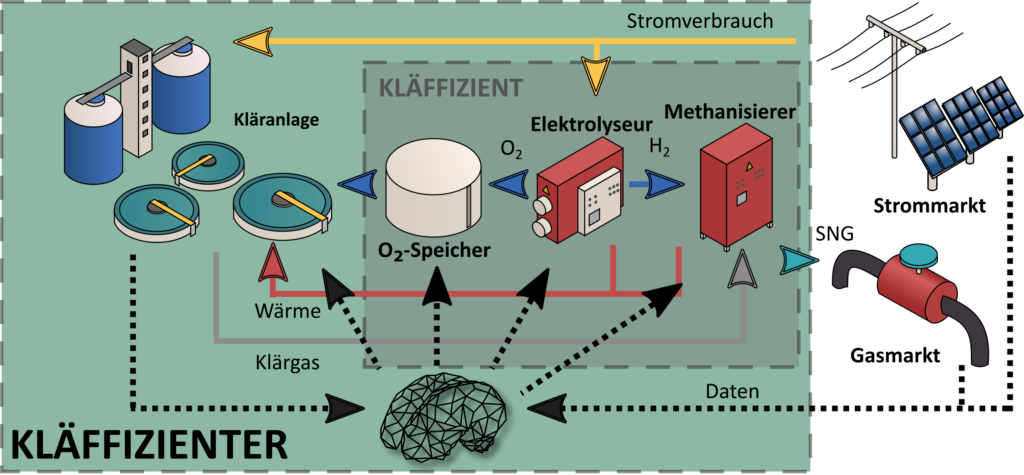Sewage treatment works guzzle electricity. They account for 30 to 40 percent of local authorities’ electricity bills. Researchers led by Prof. Dr. Jürgen Karl from Friedrich-Alexander-Universität Erlangen-Nürnberg (FAU) hope to change that and are investigating measures aimed at making sewage treatment works climate neutral or capable of contributing renewable gases to the energy market. The Federal Ministry for Economic Affairs and Climate Action is providing approximately 500,000 euros in funding for the project.
Within Europe, the energy consumption of sewage treatment works is equivalent to approximately one percent of total energy consumption. According to a new draft directive from the European Commission, they must therefore become climate neutral by 2040. The Chair of Energy Process Engineering at FAU is now exploring how sewage treatment works can pursue this goal in the project “Kläffizienter” (“even more sewage efficient”), following on from the three-year project “Kläffizient” (“sewage efficient”). The project is planned to run for three years and includes the office responsible for drainage and environmental analysis in Nuremberg (Stadtentwässerung und Umweltanalytik Nürnberg), INVENT Umwelt-und Verfahrenstechnik AG and several operators of small sewage works and municipal utilities.
Biomethane from methanation
The first project focuses on gaining as much methane as possible from sewage gas in a two step process. During wastewater treatment, sewage gas containing methane and carbon dioxide is produced. During the methanation process, in other words by adding hydrogen at high temperatures, carbon dioxide reacts to produce methane and water. The methane gained from the methanation process can be fed directly into the German natural gas grid together with the methane already produced during the wastewater treatment process.
One problem that the researchers focused on towards the end of the “Kläffizient” project was the electricity consumption of sewage treatment plants. The sewage gas that is produced during wastewater treatment is usually burnt in cogeneration units, producing both heat and electricity. If the sewage gas is used instead for methanation, then the sewage treatment plants miss out on this electricity.
Aim of “Kläffizienter”: Energy management in sewage treatment plants

The researchers hope to resolve this problem in the follow-up project “Kläffizienter”by flexibly using electricity from wind and solar energy and using artificial intelligence for energy management. They are going to take a critical look at the sewage treatment plant as a whole. “We intend to move away from pure gas management and towards holistic energy management of the sewage plant involving methanation,” explains project coordinator Jürgen Karl. The research team is exploring how a sewage treatment plant can be operated in such a way that its electricity consumption is adjusted to suit requirements, being guided for instance by the volatile production of wind and solar energy and the electricity prices. The methane that is generated can replace Russian natural gas in the gas network and considerably reduce greenhouse gas emissions of municipal waste water treatment processes.
Further information
Prof. Dr. Jürgen Karl
Phone: +49 911 5302 99021
juergen.karl@fau.de

